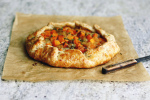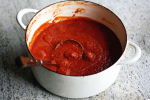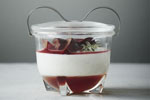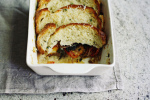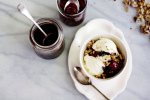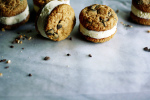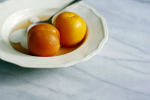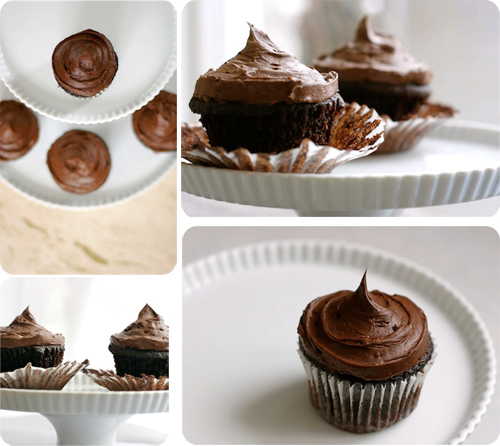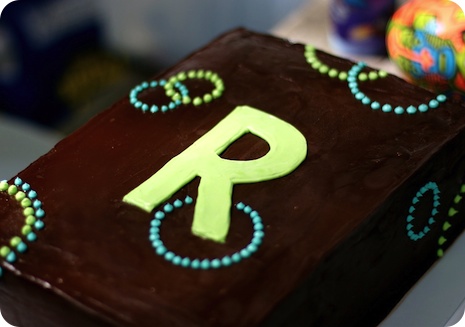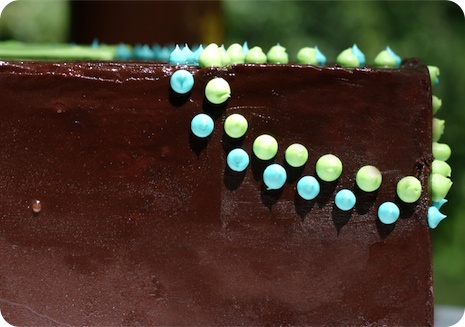A matter of taste; even more chocolate cake
 Tuesday, February 3, 2009 at 2:18PM
Tuesday, February 3, 2009 at 2:18PM
A sugar-high birthday; taste testing chocolate cakes. In the bottom left photo, the famed Double Layer Chocolate Cake (in cupcake form) sits to the left of Martha Stewart's One Bowl Chocolate Cupcakes.
January 16th marked Benjamin's third birthday, a perfect excuse for round two of the chocolate cake battle raging in my recipe file. Our biggest little man had requested "chocolate with chocolate" to celebrate his day, and what sort of Mummy would I be if I refused?
I forget how it was exactly, but I stumbled upon the recipe for Double Chocolate Layer cake, from Chef Ed Kasky (as published in Gourmet magazine, March 1999). I must have been living under a rock this last decade, because this cake has quite a following, with over 1200 (hyperbole-laden) comments on Epicurious. It has also appeared on countless other sites and discussed in detail.
With all of that fanfare, there was no alternative than to try this cake for myself. It might be a bit of retread of covered territory, but I have never been one to deny my curiosity. I had to know what the fuss was about.
With multiple celebrations ahead of us, I followed my same procedure as before, this time with Martha Stewart's One Bowl Cupcakes, as published in her Baking Handbook (Clarkson Potter, 2005), against the lauded Double Layer Chocolate cake. The major difference between the two recipes is that the former is an all-cocoa preparation, whereas the latter includes both cocoa and melted chocolate. It should be noted, as reported in my earlier test, that I substitute some prepared coffee for the water called for in the Stewart cake.
The batters were equally-easy to come prepre, with the Gourmet recipe notably thinner in its consistency. The Stewart batter was more viscous, and was my preference when I surreptitiously licked some from the bowl while cleaning up.
Half of each batter went into cupcakes, with their liners marked to indicate the recipe used. The remaining batter was combined, weighed, divided and baked into layers for a single, staggeringly-tall four-layer cake. It was one of the tallest cakes I have ever made, taller than it was wide, and inspiring an awed reaction from our birthday boy.
Despite the impressive stature of the cake, the cupcakes were of my real interest. Using the same (by weight) of batter for each cup, the Martha Stewart cupcakes baked up ever-so-slightly taller, with a gentle dome and a bit of a rimmed edge. They were pretty, perfectly-formed and slightly cracked on top, an example of what a cupcake should look like. The Gourmet recipe baked up slightly flatter, but beyond that, the texture, colour and overall look of the cupcakes were identical.
So it was down to taste. We tasted the two blindly, cake alone and then with frosting, and it was a unanimous decision.
The Gourmet recipe for Double Chocolate Layer Cake won.
Here's the thing. This cake deserves fanfare. The most fantastic, festive, fanciful fanfare that you can imagine - and more. Deeply flavoured, with a dark and even crumb, the cake is moist and tender but just a bit toothsome. Truthfully, it is similar to the Martha Stewart recipe, boasting just about every quality that had made me declare it the winner over Beatty's Chocolate Cake from Ina Garten last summer. Where the Gourmet cake took an edge was in its subtle fudginess, a bit of (excuse the technical term) squidgy-ness, that made each bite that much more satisfying.
Now I will admit I am tempted to try the One Bowl Chocolate Cupcakes with a bit of melted chocolate stirred in, just to see how it would turn out. But for now, I am more than satisfied to say that the Double Layer Chocolate Cake from Gourmet warrants its fame.
Double Chocolate Layer Cake
From Chef Ed Kasky, as published in Gourmet Magazine, March 1999.
The recipe can be found online here.
Notes:
• Some comments on the Epicurious site report that they have had trouble with the Double-Chocolate Layer Cake overflowing their standard 10" pans. The recipe specifically requires 2" deep pans, which may remedy this problem. I can only comment on the taste of the cake, as I baked mine in four 8" round cake pans, with the remainder used for cupcakes, as pictured.
One Bowl Chocolate Cupcakes
From Martha Stewart's Baking Handbook.
The Martha Stewart Recipe from the Baking Handbook is not the same as the One Bowl Cupcakes recipe that has been published on her site online, nor is it the one that was published in Martha Stewart Living for February 2009. The recipe is subject to copyright; however, a quick search does find it published online (you are looking for the recipe that begins with flour as the first ingredient).


